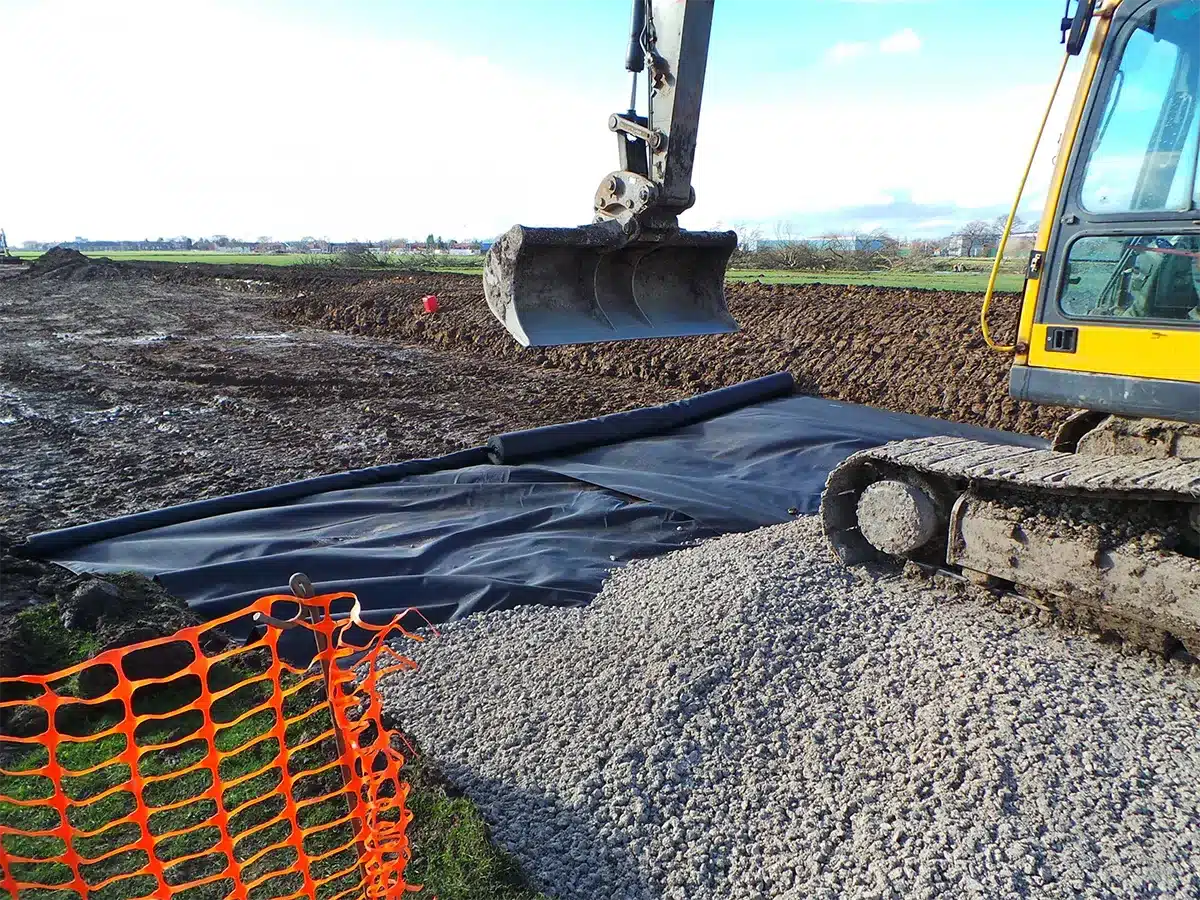+86-159 9860 6917
info@geofantex.com
geofantex@gmail.com
+86-400-8266163-44899
Geotextiles play a crucial role in various construction, landscaping, and environmental projects, offering functions such as separation, filtration, and stabilization. Two primary types of geotextiles, woven and nonwoven, differ in their composition, structure, and applications. Understanding the differences between these materials is key to selecting the right one for your project. In this article, we will discuss the characteristics, uses, and advantages of both woven and nonwoven geotextiles to provide a comprehensive overview.
What is the difference between woven and nonwoven geotextiles?
The main difference between woven and nonwoven geotextiles lies in how they are manufactured and their performance characteristics.
- Woven geotextiles are made by weaving together individual threads (usually polypropylene or polyester) in a crisscross pattern. This process creates a strong, durable fabric with high tensile strength and low elongation. Woven geotextiles are ideal for applications that require reinforcement and load distribution, such as road construction, retaining walls, and embankments.
- Nonwoven geotextiles, on the other hand, are made by bonding fibers together through heat, needle-punching, or chemical processes, resulting in a felt-like fabric. These are typically thicker and more porous than woven types, making them better suited for filtration, drainage, and separation tasks, such as in drainage trenches, erosion control, and underlayment for riprap.

What is woven geotextile?
Woven geotextiles are fabrics made by interlacing two or more sets of yarns, fibers, filaments, tapes, or other elements in a systematic, crisscross pattern, which gives them a high tensile strength and low elongation. This type of geotextile is especially effective for stabilizing soils, reinforcing structures, and preventing erosion. The strength of woven geotextiles makes them ideal for applications that involve high loads, such as in road construction, retaining walls, and embankments.
Where is nonwoven geotextile used?
Nonwoven geotextiles are widely used in projects that require filtration and separation. Their permeable structure allows water to pass through while filtering out soil particles, making them ideal for drainage systems, erosion control, and soil stabilization in landscaping. Nonwoven geotextiles are commonly used to wrap French drains or in conjunction with other sub-surface drainage solutions, under asphalt in roads, and as liners in landfills and ponds to prevent seepage while promoting water flow.

What are the advantages of woven geotextiles?
Woven geotextiles offer several advantages, particularly in terms of strength and durability. Their high tensile strength makes them suitable for projects that require soil reinforcement, such as the construction of retaining walls or embankments. Additionally, woven geotextiles provide excellent soil stabilization, preventing soil erosion and improving the overall stability of the road. They are also resistant to UV radiation, chemicals, and biological degradation, ensuring long-lasting performance in harsh environments. Furthermore, woven geotextiles are less likely to stretch, providing greater stability for load-bearing applications.
Both woven and nonwoven geotextiles serve essential roles in construction and landscaping projects, but they are designed for different purposes. Woven geotextiles are ideal for reinforcement and load-bearing tasks due to their high strength, while nonwoven geotextiles are better suited for filtration, separation, and drainage. Understanding the differences and advantages of each type allows for better project planning and ensures the correct geotextile is used for optimal results.



Get Free Sample
We’ll respond as soon as possible(within 12 hours)






















